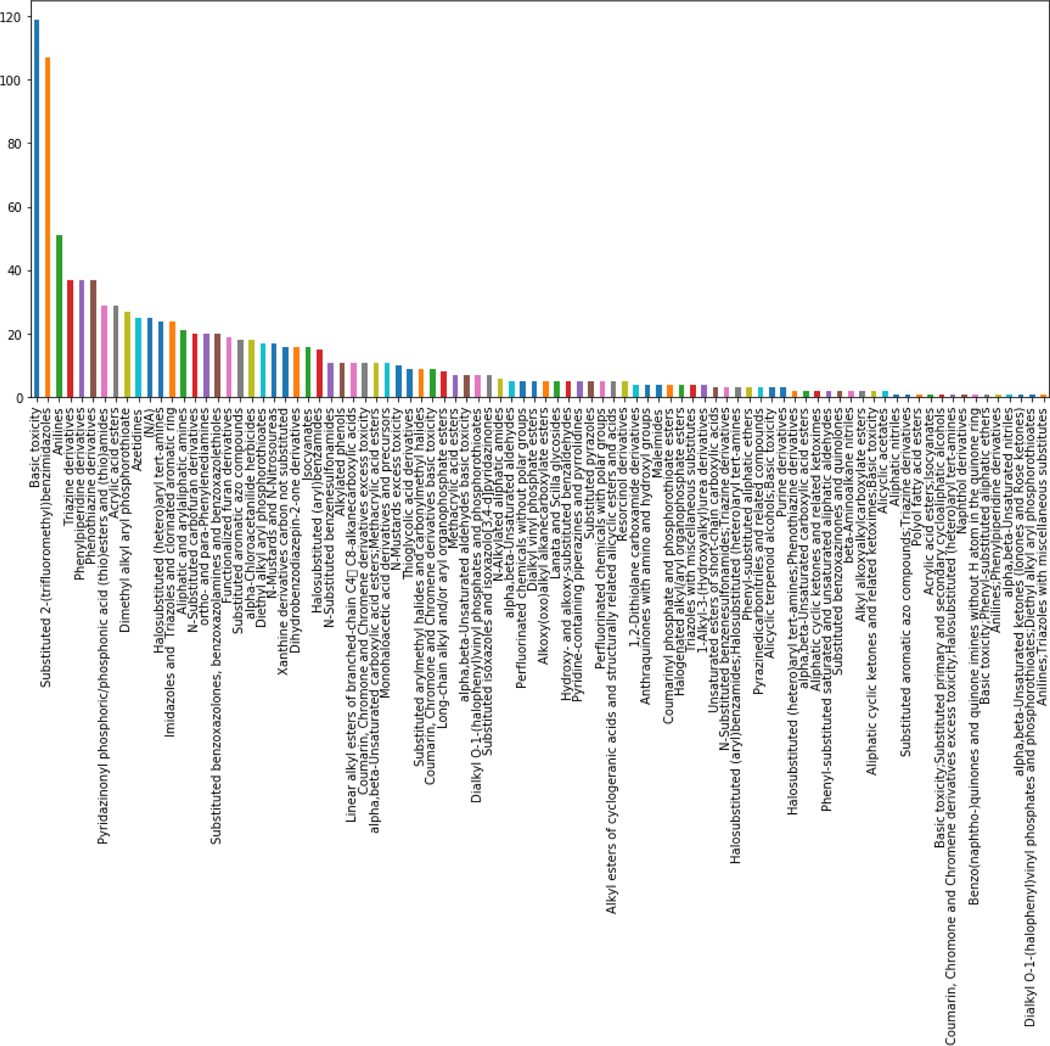Figure 10.
Barplot of the 1085 chemicals categorized across the 90 OECD Toolbox Acute Mode of Action toxicity profiler categories.
The plot represents the number of chemicals that were assigned into one of the acute mode of action categories. The majority of chemicals (72%) for which predictions could be made were designated as not categorized. The remaining chemicals 28%, could be assigned into a category (e.g. anilines). Arguably, chemicals that fell into the category of anilines would be expected to exert their acute toxicity by a similar mode of action. The basic toxicity category is a misnomer but could be likened to the baseline narcosis category that is used in acute aquatic toxicity – i.e. substances that are neutral organics and exert their toxicity based on a simple narcosis mechanism (general depression of biological activity from exposure to a nonspecifically acting toxicant) that can be modelled using water solubility or the log of the octanol water partition coefficient.

